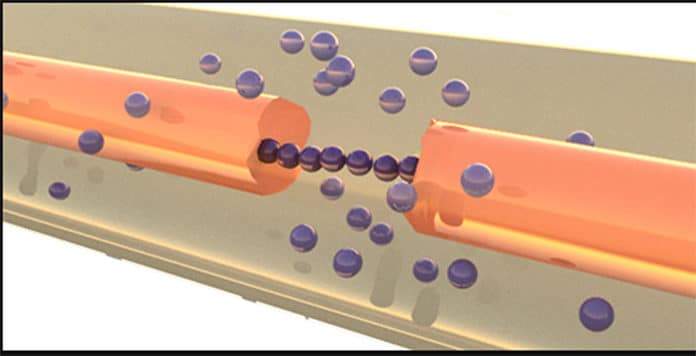Flexible electronics isn’t a new technology, but it has achieved remarkable progress over the past years and its importance to other industries have increased. Also, the flexible electronics systems such as roll-up displays and wearable devices offer inspiring possibilities that can change the way humans interact with the environment.
Though they are increasingly lightweight and durable, they are structurally rigid. They suffer from poor reliability of devices and the interconnects- the thin wires linking the logic gates and other circuit components. These interconnect are prone to breakage when bent, making flexible electronics unreliable in their present form.
A new technique developed by a group of Indian and British researchers promises to overcome this problem. In a new experiment, Amit Kumar and colleagues at the Indian Institute of Science, Bangalore, and the University of Cambridge, UK, have demonstrated a new technique for self-healing electronics.
Unlike previous self-healing techniques, this method doesn’t require rare materials or the addition of complex circuitry. The researcher team suspended copper microspheres with 5-μm radii in silicone oil, an insulating fluid. For simulating a broken circuit, researchers submerged an open electrical connection in the mixture.
When an electrical potential was applied across the gap (broken circuit) it created an electric field that attracted the copper spheres and they started moving and forming chains of loosely bound clusters of the microsphere and bridged the gap. Heat from the current flowing through the chains stabilized them, creating a more stable wire-like connection. In contrast to the re-connections produced by other self-healing experiments, the copper-sphere patch was both flexible and stretchable.
This means if a circuit breaks, it automatically creates a potential difference across the gap and would make the copper spheres move. However, more experiments are needed before self-repairing circuits can be integrated into microelectronics devices.
The research team included Sanjiv Sambandan, Amit Kumar, Virendra Parab, Arindan Handu (Department of Instrumentation and Applied Physics, Indian Institute of Science); Li Ding, Pushkaraj Joshi, Chen Jiang (Department of Engineering, University of Cambridge). The research results have been published in journal Physics Review Applied.
